10 Iconic Land Rovers That Collectors Adore
Land Rovers are widely regarded for their impressive off-road capabilities and classic design, which have made them a favorite among collectors. The brand began in 1948 with the introduction of the Series I, which set the stage for decades of iconic vehicles. Over the years, these rugged vehicles have gained a reputation for their durability and timeless appeal. Collectors cherish them for both their practical use and their status as symbols of adventure. Let’s dive into some of the most beloved Land Rovers that hold a special place in the hearts of enthusiasts.
This post may contain affiliate links, which helps keep this content free. Please read our disclosure for more info.
Land Rover Series I

The Series I started production in 1948 and became the original Land Rover for civilian use, built in the UK. It featured a simple petrol engine, utilitarian boxy body, and a strong reputation for off-road ability. Collectors value this model because it launched the brand’s legacy and only a limited number of original well-preserved units remain. One estimate shows that some early examples can fetch over $150,000 when condition and originality are high. If you are investigating one, check for correct chassis numbers, minimal rust on the aluminium body panels, and documented history.
In terms of standout features the Series I is prized for its all-aluminium body panels which helped resist corrosion compared to steel. It also delivered four-wheel-drive capability at a time when few civilian vehicles did, which adds to its significance. The driving experience is raw and direct, appealing to purists who like vehicles that reflect a bygone era. Restoring a Series I can be challenging because some parts are rare, so provenance and condition matter a lot. For those who appreciate heritage and rugged simplicity, the Series I is a strong collector piece.
1958-1961 Land Rover Series II

The Series II rolled out in 1958 and offered improvements over the original, including a wider track and more modern styling. It built on the Land Rover reputation for utility and off-road performance while accommodating more comfort for civilian use. For collectors this model is appealing because it bridges the pure work-vehicle roots and more refined subsequent versions, so it carries both character and usability. Market data indicates that examples in good condition can trade in the tens of thousands of dollars, typically $80,000-$140,000 depending on variant and originality. When assessing one look for correct engine variant and good structural condition.
One distinctive feature of the Series II is its curved body side upper edge and the improved engine options which made it more versatile for civilian and export markets. It also supports a roof-rack, station-wagon body style and has stronger appeal for those wanting vintage utility with usability. Though simpler than modern SUVs, it gives a driving feel and presence that many find rewarding. Maintenance is easier than earlier units in some respects, but rust remains a concern so thorough inspection is wise. Overall the Series II model is a significant part of Land Rover’s heritage.
1961-1972 Land Rover Series IIA
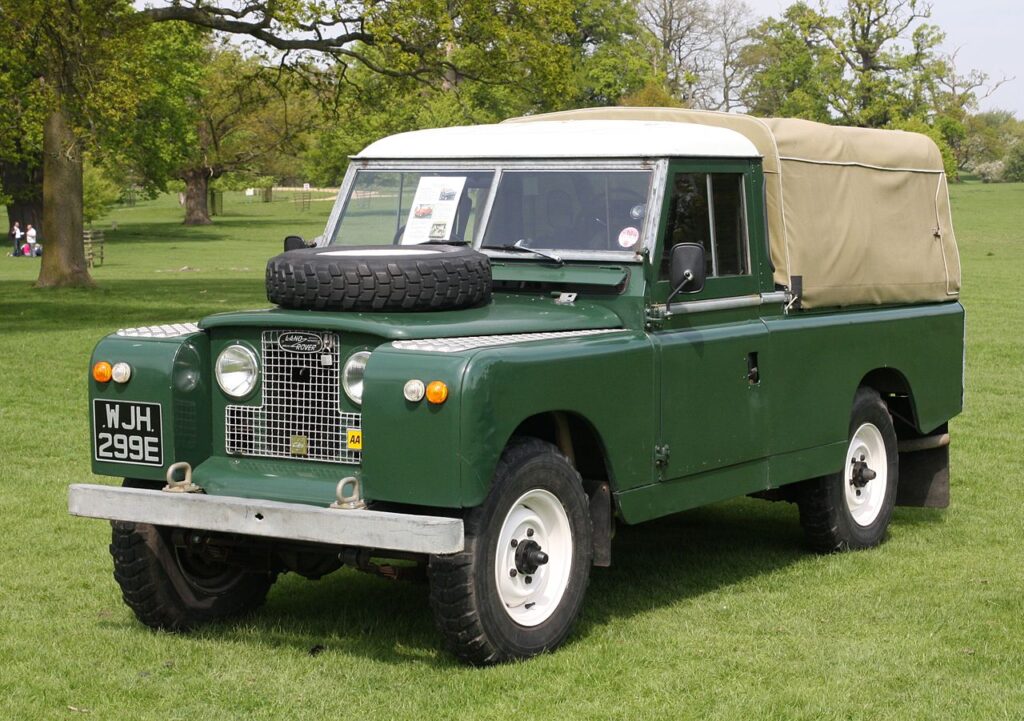
The Series IIA began production in 1961 and included updates such as the 2.25-litre petrol engine and improved drivetrain options. It is favored by collectors because many examples remained in use for decades and those that survived in good original condition are relatively rare. Typical market values show good examples around $50,000-$70,000 depending on condition, with some special variants going higher. If you find one with original sheet-metal and minimal modifications it will have stronger appeal. Key things to check include body floor thickness, frame condition and correct engine type.
A notable feature of the Series IIA is its simplicity of mechanics paired with strong off-road capability, making it enjoyable to drive as well as to preserve. It also has a strong aftermarket support which helps owners maintain or restore them with a degree of confidence. While not luxurious by modern standards, it gives a connection to vintage utility and heritage. Collectors often prize early production examples or unique body styles like the 109-inch wagon. The Series IIA therefore stands out as a meaningful vintage Land Rover.
1971-1985 Land Rover Series III
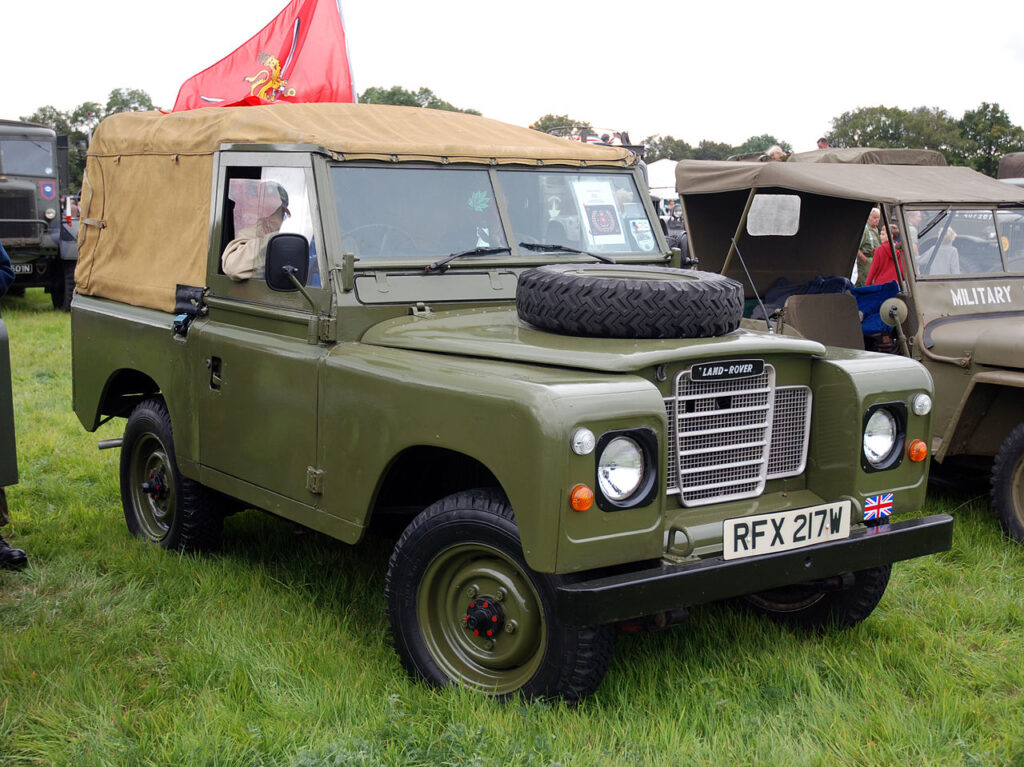
Production of the Series III began in 1971 and this model introduced improvements such as more modern headlights and revised gearboxes. It holds collector appeal because it was the last of the Series body-style Land Rovers and many were used for decades, meaning good survivors are now scarce. Market records show examples in very good condition can command between $20,000 and $100,000 depending on configuration and provenance. When evaluating one, check for matching engine or gearbox, solid under-body and minimal previous modification. Enthusiasts value it for its mixture of vintage style and relative usability.
One strong feature of the Series III is its improved usability compared with earlier models while retaining classic Land Rover character and components. It supports multiple body types including pickup, wagon and soft top, which adds to its collector variety. While some may view it as more common than earlier versions, condition and authenticity significantly affect value. Its mechanical parts are generally more accessible, making maintenance less daunting to owners. For a vintage Land Rover with historical significance and decent usability the Series III is a worthy proposition.
1970-1996 Range Rover Classic (First generation)
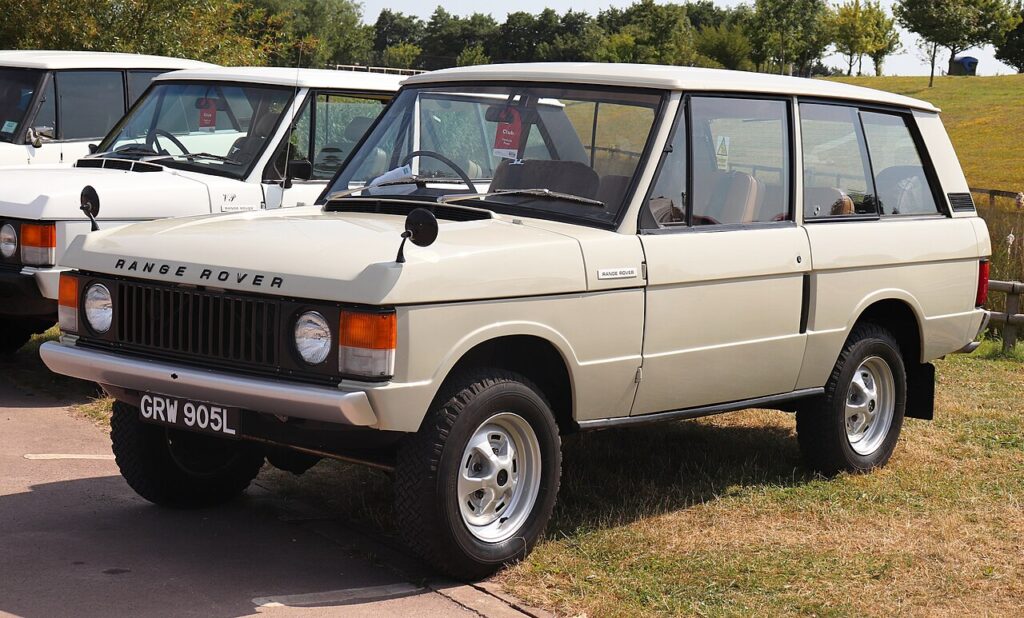
The Range Rover Classic was launched around 1970 and signalled a shift towards combining luxury with off-road capability in one vehicle. It is admired by collectors because it introduced features that were rare at the time for 4×4 vehicles, such as coil springs, disc brakes all around and a dual-range permanent four-wheel-drive system. Some examples from this model line have sold for over $120,000, depending on year, condition and rarity. A particularly desirable feature is the early two-door versions and limited production variants which carry higher value. For buyers it’s important to verify originality of trim, major service records and rust free body.
The stand-out feature of the Range Rover Classic is its blend of on-road refinement and off-road performance which in its day was unmatched in many markets. That dual nature gives it longevity of interest for both classic car lovers and off-road enthusiasts. The aluminium body panels and steel safety frame make for better corrosion resistance, though rust can still be found so inspection matters. Those early models paved the way for luxury SUVs and so have historical importance. For a collector who wants a vintage 4×4 with style and capability the Range Rover Classic hits many marks.
1993 Land Rover Defender 90 NAS (North American Spec)

The Defender 90 NAS was imported into the U.S. starting around 1993 and features the V8 engine, roof racks, roll-cage style elements and safari ethos. Its collector appeal is high because very few of these North American versions exist, making them rare. One market listing indicates some went for over $150,000 for pristine examples. Key features include the short wheel-base, V8 powertrain and iconic silhouette which appeals to those wanting classic Land Rover form in a modern setting. If purchasing one check for VIN verification, rust in frame sections and documented import status.
A distinguishing feature of the Defender 90 NAS is its compact size combined with genuine off-road heritage from Land Rover and the U.S. market rarity. This gives it a collector vehicle appeal that goes beyond typical utility. The driving experience remains engaging, thanks to the V8 and simple mechanics. Ownership of one often means strong maintenance support from specialist communities. For someone chasing a collectible Land Rover with modern relevance the Defender 90 NAS stands out.
Land Rover Defender 110 (1983 County Station Wagon and later)
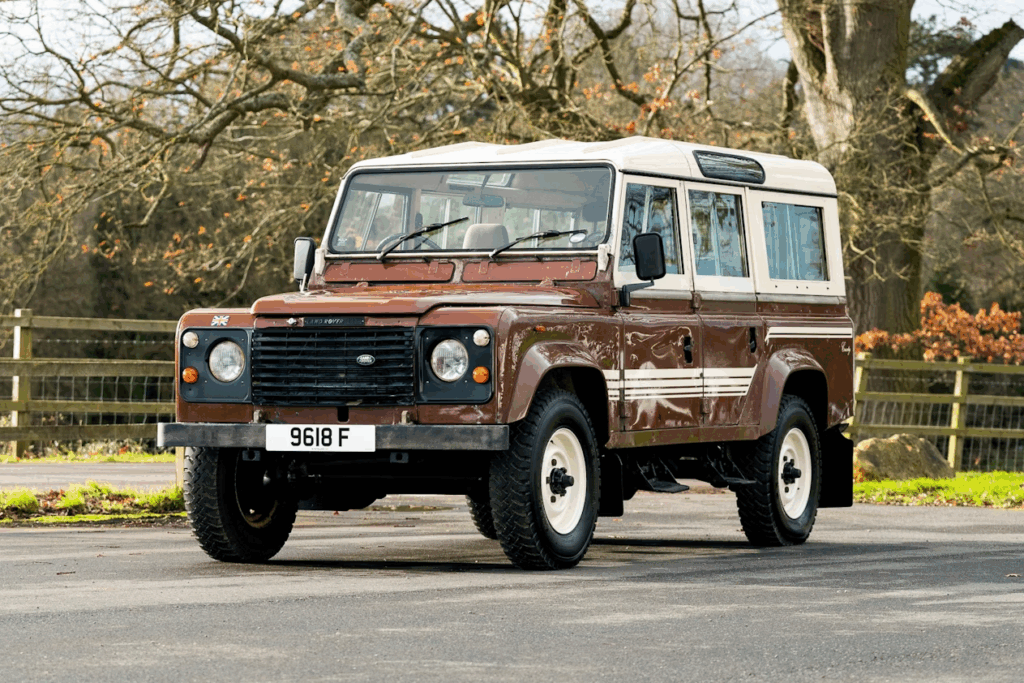
The Defender 110 series began appearing in the early 1980s and includes many desirable variants such as the County Station Wagon. It is sought after by collectors because of its long wheelbase (110 inch) which allowed more interior space and versatility while retaining classic Land Rover ruggedness. Market analyses show values ranging from $100,000-$120,000 for well-preserved examples depending on year and variant. A key usable feature is the combination of utility and comfort compared with earlier short-wheelbase versions. For those inspecting one check original parts, frame condition and whether previous heavy off-road use has occurred.
One important feature of the Defender 110 is its balance between practicality and heritage-offering serious presence, space and the signature Land Rover build. The broad community of specialists means parts availability is reasonable. Many owners upgrade with subtle improvements while retaining originality, which influences value. For someone who values both history and usability in a classic Land Rover the Defender 110 is a strong option.
1989-1998 Land Rover Discovery Series I
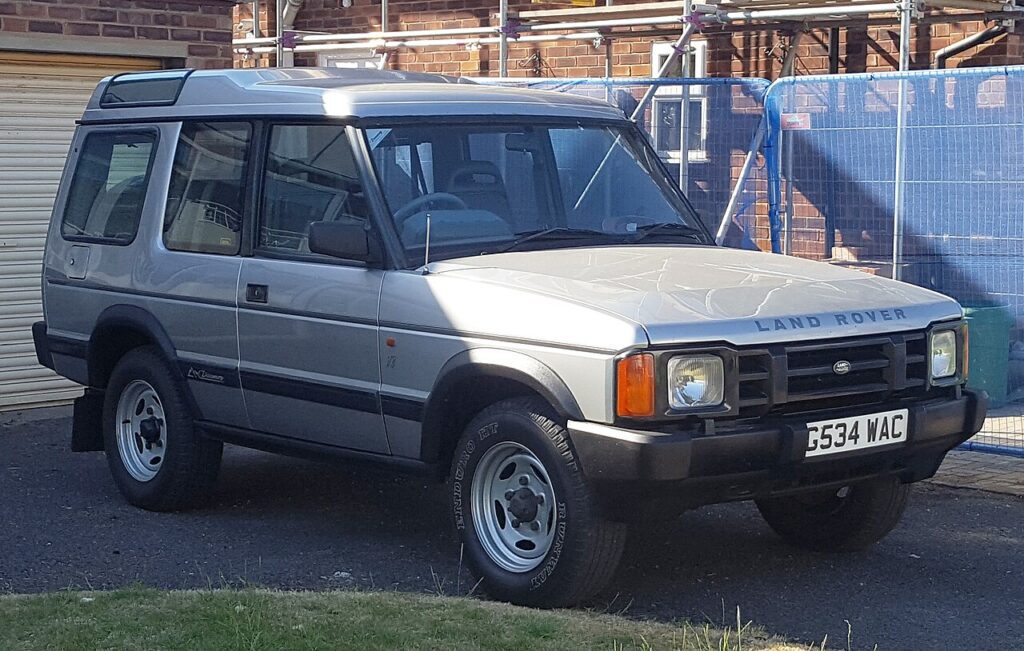
The Discovery Series I was introduced in 1989 and is built on much of the Range Rover first-generation underpinnings. It appeals to collectors because it offered the Land Rover four-wheel-drive heritage in a more family-friendly format, making it a bridge between pure utility and modern off-road luxury. Typical values for well-kept examples start in the tens of thousands of dollars, and rarer high-spec versions or limited editions may reach much higher. Notable features include the stepped roof for extra passengers, strong off-road capability and comfortable interior for its era. When examining one check for correct drivetrain, interior wear and frame rust.
A strong selling point of the Discovery Series I is its adaptability-it could be used for family transport, rough terrain or longer travel, making it versatile. It includes Land Rover heritage components such as the ladder chassis and coil suspension, which maintain interest for enthusiasts. Although not as vintage as series models, it is now old enough to qualify for classic status in many regions. For collectors wanting a Land Rover with practicality and heritage the Discovery Series I is a worthy choice.
1980s-1990s Land Rover Range Rover Classic Vogue
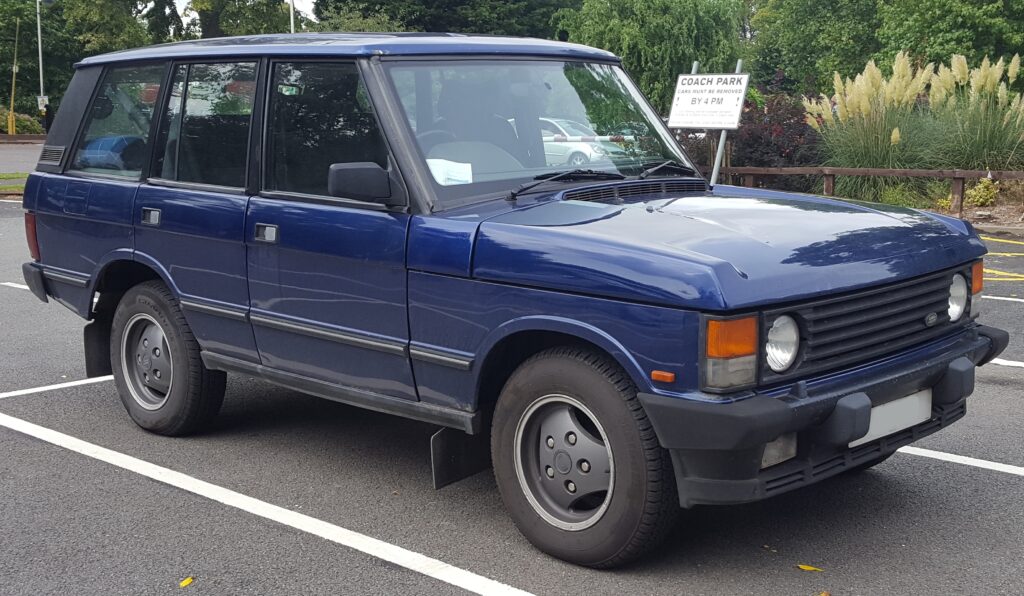
The Range Rover Classic Vogue models produced in the late 1980s to 1990s are appreciated for bringing luxury and performance into the Land Rover family. These models are admired by collectors because they represent a turning point where the brand combined sophistication with off-road capability. Values for clean examples can vary widely but strong examples often command upwards of $50,000 depending on mileage and condition. The feature to highlight is the leather interior, automatic transmission, and more advanced suspension relative to earlier models. When evaluating one make sure service history is complete and rust in key areas has been addressed.
These Vogue models often deliver comfortable motoring with a heritage badge, making them attractive for both driving and display. The combination of luxury features and iconic 4×4 architecture gives them dual appeal. Parts availability is good because many share components with other Land Rover vehicles of the era. For a collector wanting a Land Rover that combines comfort and heritage this variant is a smart pick.
Land Rover Defender 110 Camel Trophy (Event Edition)

The Defender 110 Camel Trophy edition is a tournament-inspired variant tied to the famed expedition events sponsored by Land Rover. It is valued by collectors because it has strong provenance-its tie to Camel Trophy events gives it story and rarity. One of its key features is expedition gear, unique livery and equipment which give it authenticity and presence beyond the standard model. Depending on condition and originality, these vehicles may command premiums above normal Defender valuations. For potential owners inspect the equipment, expedition-spec accessories and check that the originality of stickers or decals is intact.
The strong association with adventure and exploration gives this model an aura beyond being just another SUV-it represents heritage of endurance. Many owners of these editions enjoy them for both display and light driving, rather than heavy use, which helps maintain condition. The parts base is similar to standard Defender therefore support is available. For someone drawn to iconic visual appeal and story the Camel Trophy edition is a compelling choice.
Land Rover Range Rover Autobiography One Of One (Ultimate Collector Edition)
The Range Rover Autobiography One Of One is a bespoke or one-off Land Rover product created under the brand’s customization division, often with individually chosen finishes. Collectors prize it because it is uniquely configured, limited to one or very few units, and carries bespoke materials and craftsmanship. The standout feature is the exclusivity-special paint, interior materials, unique badging and often numbered buildplates make it collector-worthy. Market value is hard to pin exactly but such one-off examples often sell into six figure sums based on brand and provenance. When evaluating one ensure full build documentation, originality of unique parts and history of ownership.
These unique editions sit at the convergence of luxury and heritage-they are intended for enthusiasts who appreciate both the brand’s legacy and exclusivity. While driving them may require more upkeep due to customization, the rarity and brand story justify interest. For a collector wanting something singular within the Land Rover family this type of model represents the top echelon of collectible Land Rover ownership.
This article originally appeared on Avocadu.
